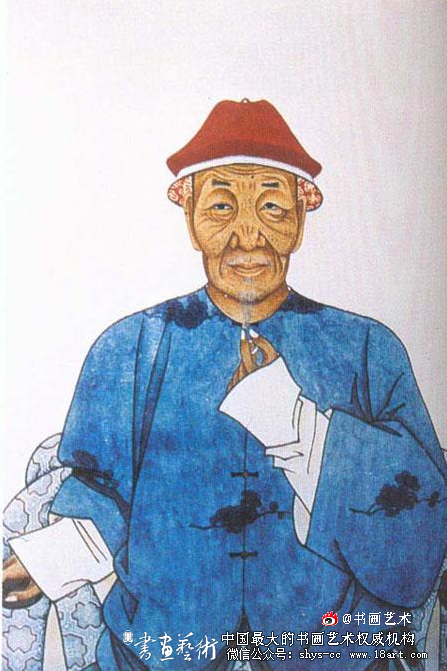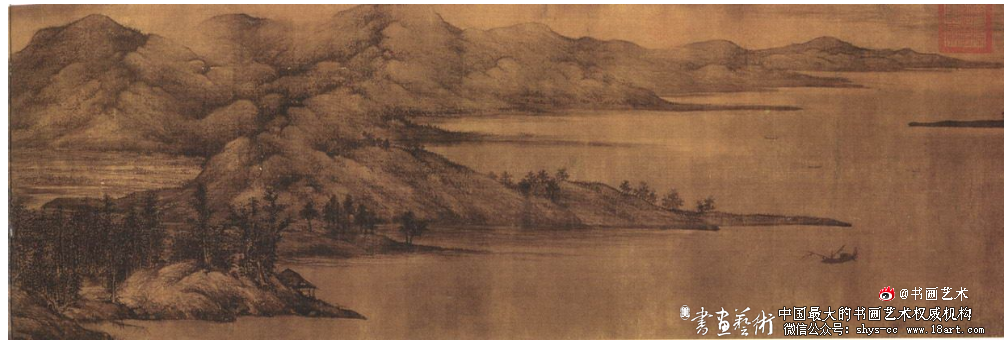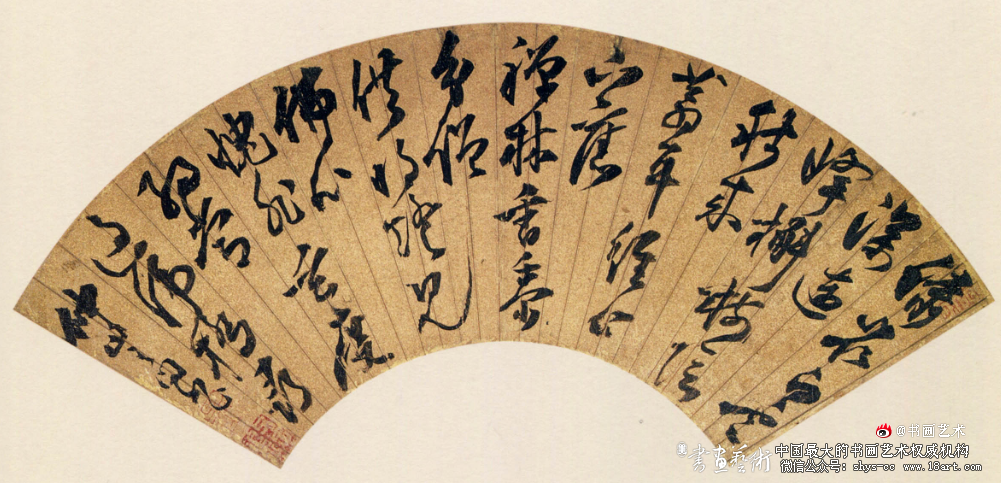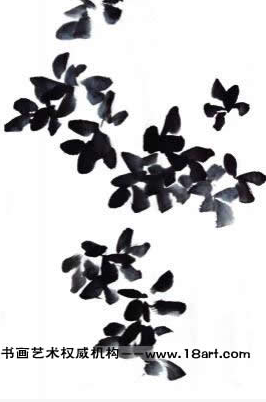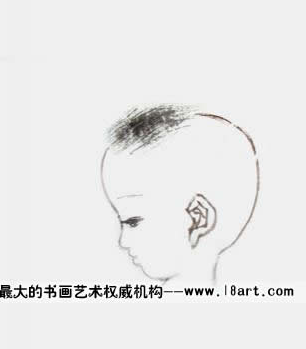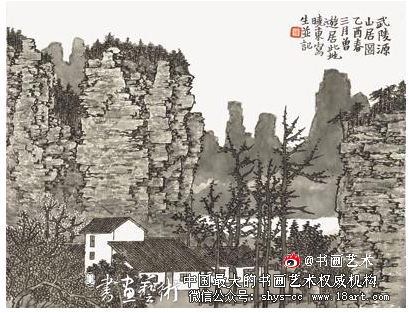古玩百科:杜军书画
大家好,人教版初一英语下册第九单元知识点「七年级下册英语知识点人教版」很多人还不知道,现在让我们一起来看看吧!
SA9 What does he look like?
知识点大全
基本句型1:询问外貌特征
What does she look like? 她长什么样?
She has long straight hair. 她有着长直发。
What does he look like? 他长什么样?
He is tall. 他很高。
What do they look like? 他们长什么样?
They are of medium build. 他们中等身材。
小知识:look在此处为感官系动词,意思为“看上去,看起来”。like为介词,意思为“像•••,好像•••”。
说明1:句中出现感官系动词时,将其当做实意动词处理。即:其特殊疑问句的结构与实意动词的特殊疑问句结构相同。
思考:试分析句子结构。
说明2:
观察该句型的回答可以发现,与以前所学的基本句型不同的是,以前所学的基本句型的问与答在句型结构上保持着一致。(如:问句中有be动词,回答时也用含be动词的句子去回答)。
而本单元回答基本句型时则不限。只要是在回答外貌特征即可,不要求问句与答句在句型结构上一致。一般来说回答此句型有两种回答方式。
回答一:主语 be 表语。 (以此来回答主语的特征)
回答二:主语 have/has 宾语。(若描述主语现在的状态,用have/has后接宾语,来描述主语有着•••的外貌特征)
辨析:三个类似的句型
1)What’s he like? 他怎么样?(句中like为介词。用于询问外貌特征或性格特征)
2)What does he like? 他喜欢什么? (句中like为实意动词。该句用于询问主语喜欢什么)
3)What does he look like? 他长什么样?(句中look为感官系动词,like为介词。该句即为本单元基本句型,只用于询问外貌特征)
基本句型2:确认外貌特征(选择疑问句)
Is he tall or short? He is tall.
Is he heavy or thin?
He isn’t heavy or thin. He’s of medium build.
Does he have long hair or short hair?
He has long hair.
Do they have black hair or yellow hair?
They don’t have black hair or yellow hair. They have brown hair.
语法:选择疑问句
一、概念
选择疑问句指的是提问者提供两种或两种以上情况让对方从中作出选择的疑问句。回答时不用yes/no来回答。且需根据实际情况回答(即实际情况可能问句中未提供)。
二、特点
1)书写特点
给出的选项之间用连词or连接。(若提供三个或三个以上的选项,书写时遵循“A,B or C”的原则)。
2)读音特点
两个选项则前升后降。三个或以上选项,最后一个读降调,前面的全部读升调。
三、类型
1)一般疑问句形式的选择疑问句。
e.g. Are you a doctor or a teacher? 你是医生还是教师? I am a pilot.
e.g. Is he sleeping, reading, or watching TV? He is sleeping.
2)特殊疑问句形式的选择疑问句。
e.g. What would you like to drink, tea or coffee? Tea, please.
e.g. What can they do, play the pipa or sing a song?
总结:通过观察以上选择疑问句,可以发现问句中所提供的选项可以是名词,形容词之间的选择,可以是动词词组之间的选择,可以是介词短语之间的选择等。
小知识:形容人外貌特征的重要形容词
tall adj. 高,高的。 short adj. 矮的。
thin adj. 瘦的。 fat adj. 胖的。 heavy adj.重的。(可用于委婉的形容人很胖)
小知识:形容人外貌特征的重要介词短语
of medium build 中等身材。(作表语)
e.g. He is of medium build.
小知识:build的新含义。
build n. 身材,体型,体格。(一般不可数,但有时可用“a/an 形容词 build”来形容一种•••样的身材或体型。)
e.g. We are of the same build. 我们体型是相同的。
e.g. He is of strong build. 他体格强壮。
e.g. Wow! What a strong build. 哇!多么强壮的体格呀。
小知识:medium adj.中等的。
辨析:middle 与 medium
medium adj. 中等的。(指大小、尺寸等方面。)
e.g. 形容尺码时所用的:S/M/L。其中的M即是medium。
middle adj. 中等的,中间的。(作为“中等的”意思时,一般表示教育、学校等。作为“中间的”意思时,指物体空间位置上,位于中间、中央。)
of medium height 中等身高。(作表语)
e.g. I am of medium height.
小知识:height n.身高。
说明:一般height若表示泛指意义的“身高”或抽象意义的“身高”,通常不可数。
e.g. 如填表时身高那一栏就会用height表示. 若强调不同人或事物的高度,可用复数形式。
e.g. We can see some buildings of different heights. 我们可以看到一些高低不一的建筑。
复习:多个形容词修饰名词的排序。
口诀:数代冠美小圆旧黄,中国木书房。
小知识:如何形容人的头发
本单元描述头发时,长短即是口诀中的“小”字;曲直即是口诀中的“圆”,颜色即是口诀中的“黄”。
1)曲直 curly/straight hair 卷发/直发
e.g. I have curly hair.
2)颜色 red/black hair 红发/黑发
e.g. She has black hair.
3)长短 long/short hair 长发/短发
e.g. I had long hair. But now I have short hair.
4)综合 long straight brown hair 棕色长直发
e.g. His family all have short curly red hair. 他的家人都有着红色的短卷发。
补充小知识: straight adj. 直的,笔直的。
e.g. This road is straight. 这条路是直的。
adj. 直的,异性恋的。(非同性恋)
e.g. 一位男士说 “Sorry, I don’t like men. I am straight. 对不起,我不喜欢男士。我是直的。”
e.g. I am not straight. 我不是直的。(我是同性恋)
adj. 直截了当的。
e.g. Come on! I need a straight answer. Do you love me or not? 快点!我需要一个直截了当的答案!你到底爱不爱我?
adv.笔直的。
常见搭配:go straight. 直走,笔直朝前走。
e.g. You can just go straight this road, and turn left when you see the first crossing. 你可以就沿着这条路直走,当你看到第一个十字路口的时候左转。
辨析:tall 与 high的区别
tall adj. 高的。(一般指人,植物,动物等有生命的东西的高。)
high adj. 高的。(一般指无生命的东西的高。)
注意:描述建筑物或山的高时,tall和high都可以使用,不过此时认为high形容的高度比tall形容的高度还要更高。
知识点大全2d
Are you going to the movie tonight? 你今晚打算去看电影吗?
分析:典型的现在进行时表将来的用法。
补充:表示看电影的几个常用表述:
go to the/a movie 去看电影
see a/the movie , see the movies 看电影
see a/the film 看电影
go to the theater/cinema 去剧院/影院(看电影)
小知识:tonight n.今晚。
e.g. Tonight is a good night. 今晚是一个美好的夜晚。
tonight adv. 在今晚,在今夜。(作时间状语。若置于句首需逗号隔开。)
e.g. I will watch TV tonight. = Tonight, I will watch TV.
复习:tomorrow n. 明天。
e.g. Tomorrow will be better. 明天会更好。
adv. 明天。(做时间状语。置于句首时无需逗号隔开。)
We are meeting at seven, right? 我们七点见,对吧?
说明:现在进行时表将来的用法其实不止有“be going to”结构。现在进行时表将来主要用在已经计划好安排好的动作。能这样使用的动词其实很有限。常见的目前学过的有arrive, come, get, go, have, leave, fly, meet, play, see, sleep, spend, start, stay, work等。总的来说平时注意多积累,学习并体会这种用法。
小知识:meet v. 遇见,见。
e.g. Nice to meet you. 很高兴见到你。
e.g. Let’s meet at Jack’s home. 让我们在杰克家见。
补充:meeting n.会,会议。(可数)
e.g. The meeting is on tomorrow morning. 会议是在明天上午。
补充:运动会既可以用“sports meet”也可以用“sports meeting”。
e.g. We will have a sports meet/meeting next week.
But I may be a little late. 但我也许会晚一点(到)。
小知识:
may 情态动词,用于表示推测,意思是“大概,或许,可能”。(其否定直接在may后加not即可。表示“可能不,也许不。”)
常见用法:
1)主语 may be表语。(表示主语的状态可能是•••)
e.g. You may not be right. 你或许不是正确的。
e.g. I can’t find my pen. It may be in my bag.我找不到我的笔了,它大概在我包包里吧。
2)may do (sth.) 也许会做•••,可能要做••••。
e.g. He may eat ice-cream. 他也许在吃冰淇淋吧。
3)may be doing (sth.) 也许正在做••••,大概正在做•••。
e.g. He may be swimming right now. 他现在也许正在游泳呢。
辨析:maybe 与may be的区别.
may是情态动词,具体用法如前所述。第一种用法中出现的may be后接表语,用于表示对主语身份,地位,年龄,状态,特征等的猜测。第三种用法中出现的may be后接doing,用于对主语正在做某事的推测。
maybe adv. 也许、可能。
(用于表示对整个句子的推测)
(在句中作状语,位于句首,无需逗号隔开)
(maybe或may be都可以用来表示推测, 随便用哪个都行,只需要注意遵循其各自用法即可。)
e.g. I think she may be at home. = I think maybe she is at home.
小知识:a little 作程度副词的用法
1)当a little用于肯定句时,相当于程度副词,用于修饰形容词等。意思为“一点点,有一点”。(此时a little = a bit = a little bit)
e.g. It’s a little cold tonight. = It’s a bit cold tonight. = It’s a little bit cold tonight. 今晚有一点冷。
2)当a little与a bit用于否定句,即出现“not a little 形容词”或“not a bit 形容词”结构时,它们依然是作为程度副词修饰形容词,但意思则完全相反。
“not a little 形容词”中的not a little,意思是“不止一点,十分,非常”。
e.g. I am not a little tired now. 我现在不止一点累。/我现在十分的累。
“not a bit 形容词” 中的not a bit,意思是“一点也不,完全不,根本不”。
e.g. I am not a bit tired. 我现在一点也不累。/我现在完全不累。
小知识:a little 作形容词的用法
1)一般情况下,a little 可作形容词使用,来修饰不可数名词。意思是“有一点”。
e.g. I only have a little money. 我只有一点钱。
e.g. Please give me a little water. 请给我一点水。
2)有时a little(this little)可用在可数名词的单数前, 用于形容人(或动物)的幼小或娇小可爱。常常带有赞赏或怜悯等感情色彩。
e.g. A little boy is playing under the tree. 一个小男孩正在树下玩耍.
e.g. Look! There is a little cat under the tree.
小知识:a bit of作形容词的用法
(注意:当作形容词使用时,不能直接用a bit来修饰名词。只能用a bit of 来修饰名词。)
a bit of作形容词使用时,也是修饰不可数名词。此时a bit of = a little.
e.g. Please give me a little water. = Please give a bit of water.请给我一点水。
辨析:a little ,little, a few, few作形容词的用法
1)a little 有一点。(如前所述,一般修饰不可数名词,有时也可用于描述人或动物的娇小或幼小。)
e.g. I have a little money. 我有一点钱。
2)little 很少,几乎没有。(修饰不可数名词)
e.g. I have little money. 我几乎没有钱。
3)a few 有一点。(修饰可数名词复数)
e.g. I have a few pens. 我有一点钢笔。/ 我有几只钢笔。
4)few 很少,几乎没有。(修饰可数名词复数)
e.g. I have few pens. 我几乎没有钢笔了。
恩。他有着棕色的头发并且戴眼镜。
复习:glass n.玻璃。(不可数) n.玻璃杯。(可数)
glasses n. 眼镜。(只能用复数表示眼镜)
小知识:a pair of glasses 一副眼镜
wear glasses 动词词组。意思为“戴着眼镜”。(wear强调戴的状态,非戴的动作)
wear a pair of glasses 动词词组。意思为“戴着一副眼镜”。
(一般来说形容某个人戴眼镜时,两者都可以用。)
e.g. He always wears glasses. = He always wears a pair of glasses.
See you later then. 那待会见。
知识点大全3b
And he is really handsome. 并且他很帅。
小知识:handsome adj. 英俊的,帅气的。(多用于描述男性)
e.g. He is a handsome young man. 他是一位年轻帅气的小伙子。
补充:beautiful adj. 美丽的。(多用于描述女性。语气比pretty更强烈)
补充:pretty adj. 漂亮的,靓丽的。(多用于描述女性)
e.g. She has a pretty little daughter. 她有一个漂亮的小女儿。
pretty adv.十分,相当 (相当于very)
e.g. She is pretty beautiful. = She is very beautiful.她十分美丽。
e.g. This house is pretty big. = This house is very big.
补充:ugly adj. 丑陋的。(男女皆可形容)
e.g. She is pretty ugly. 她十分丑陋。
知识点大全3c
What does your favorite actor or actress look like? 你最喜欢的男演员或女演员长什么样?
小知识: actor n. 男演员。(可数,复数为actors)
actress n. 女演员。(可数,复数为actresses)
补充类似的名词:
waiter n.男服务员。(可数)
waitress n. 女服务员。(可数)
知识点大全3d
This person is of medium height.
小知识:
person n.人。(可数。person不包含性别的含义在内。如果要强调是人而且强调性别,可以用man/woman等词来形容。)
复习:由于people为集合名词,形式为单数意义永远为复数。前面不能加不定冠词,也不能加数词one。因此表示一个人时可以就可以用a person来表示,表示多个人时可以说two persons也可以说two people。
知识点大全SB
小知识:与职业相关的英语构词法
常见构词法
说明:通过观察可以发现,下列动词或名词并非所有的都是直接加er或ist来变成表示职业的名词的。有的需要经过一定变换后再加er或ist。还有动词的是加or变成名词。
1) 动词 er à (表示职业或身份的)名词
teach v.教 teacher n. 老师,教师
play v. 打•••球,玩••• player n. 玩家,运动员
sing v. 唱 singer n. 歌手
dance v.跳舞 dancer n. 舞者,舞蹈家
clean v.打扫 cleaner n.
清洁工
fight v. 打架 fighter n. 斗士,战士
act v. 表演,行动 actor n. 男演员
work v. 工作 worker n. 工人
wait v.等待 waiter n. 男服务员
2) 名词 ist à (表示职业或身份的)名词
piano n. 钢琴 pianist n. 钢琴家
violin n. 小提琴 violinist n. 小提琴家
art n.艺术 artist n. 艺术家
science n.科学 scientist n. 科学家
小知识:本单元重要的职业或身份的名词
actor n. 男演员。(可数,复数为actors)
actress n. 女演员。(可数,复数为actresses)
singer n. 歌手 (可数) artist n. 艺术家 (可数)
小知识:形容外貌特征的常见表述
a big nose 一个大的鼻子。
e.g. John has a big nose. 约翰有一个大的鼻子。
a small mouth 一个小嘴巴。
e.g. I have a small mouth. 我有一个圆脸。
a round face 一个圆脸。
小知识:face n. 脸。(可数)
小知识:round adj. 圆形的。
复习:circle n. 圆。(可数)
blonde hair
复习:hair n. 头发。(泛指头发时为不可数名词。强调一根或两根头发时则为可数名词)
小知识:blonde adj. 金色的,亚麻色的。(主要用于形容女性的头发是金色的。不用于形容物品)
补充:golden adj. 金色的。(主要形容物品的颜色是金色)
wear glasses / wear a pair of glasses 戴眼镜。
e.g. My father wears glasses. = My father wears a pair of glasses. 我爸爸戴眼镜。
(two) big eyes 大眼睛。
(说明:正常情况下人有2只眼睛,且两只眼睛大小等是一样的,因此需用复数eyes。也因此既可以加上数词two,或者不加数词。)
(说明2:当然也有可能人只剩一只眼睛。或者在描述某些动物时有多只眼睛。总之具体问题具体分析。)
e.g. She has big eyes.
e.g. She has two big eyes.
e.g. This animal has four eyes. 这只动物有四只眼睛。
e.g. This man is so strange. He has one big eye and one small eye. 这个人好奇怪。他有一只大眼睛和一只小眼睛。
a long face 一个长长的脸。
e.g. My friend John has a long face and big eyes. 我的朋友约翰有着长长的脸,大大的眼。
知识点大全2a
Complete the chart with words of the opposite meaning.用相反含义的词完成表格。
小知识(了解即可)
complete vt. 完成。
opposite adj. 相反的
meaning n. 意思,含义 (不可数)
e.g. What’s the meaning of this word. 这个单词是什么意思?
知识点大全2b
He is a police artist.
直译:他是一名警方艺术家。
意译:他是一名警方画像师。/ 他是一名警察拼图师。
小知识:police artist 是指的在警局工作的,负责画犯罪嫌疑人拼图的警务人员。
Some people see crimes and then talk to Joe.
一些人们看到犯罪活动,然后跟乔说。
小知识:crime n.犯罪,犯罪活动。
(当其泛指“犯罪活动”时不可数。强调具体行为的犯罪时则可数。)
e.g. There is much crime in the world. 世界上有太多犯罪活动了。
e.g. What a wonderful crime. 多么完美的一次犯罪啊。
e.g. I saw a lot of crimes on Long Street yesterday. 我昨天在长街上看到了许多犯罪活动。
小知识:criminal n.罪犯,犯人。(可数)
e.g. He was a criminal. But now he is a good man.
e.g. These are bad criminals.
They tell him what the criminal looks like.
他们告诉他罪犯长什么样。
And the police put it in newspapers and on television to find him. 然后警察把它放到报纸上和电视节目上来找到他。
e.g. When I come home, my father is reading a newspaper.
常见用法:in (the) newspapers 在报纸上。(介词短语)
in a/the newspaper 在报纸上。(介词短语)
(用于形容新闻,文章,图片等印在报纸上时,不用介词on,而是用in)
e.g. There is an article about me in newspapers. 报纸上有一篇关于我的文章。
e.g. A picture is in the newspaper.
回忆:paper n.纸。(不可数)
e.g. This is a piece of paper. 这是一张纸。
回忆:news n. 新闻。 (不可数,只有复数形式。)
e.g. I heard a piece of news. 我听到了一则新闻。
小知识: television n.电视,电视机。(可数)
(television常缩写为TV。televisions则缩写为TVs)
e.g. There are a lot of televisions in his house.
television n. 电视节目。(不可数)
(平时所说的动词词组“watch TV”中的TV,其意思实际上是“电视节目”。只不过笼统的翻译“watch TV”的话就翻译为“看电视”了。)
e.g. I like watching television. 我喜爱看电视。
常见搭配:on television 在电视节目上/里(介词短语,固定搭配)
e.g. I saw you on TV. 我在电视节目上看到你了。
on the/a television 在电视上。(介词短语,表示物品在电视上方放置着)
e.g. My book is on the TV. 我的书在电视上(放着)。
小知识:
put v.放,放置,推。
(说明,put既可以作及物动词,又可以作不及物动词。而且其搭配很丰富。平时需注意积累。)
常见搭配:
put sb. to bed 安顿某人睡觉。
e.g. I always put my grandpa to bed, then I go to sleep.
put aside 把•••放到一边。
e.g. Please put aside your story books, we are going to study now. 请把你的故事书放到一边,我们现在准备学习了。
put out 灭火,熄灭,扑灭。
e.g. My mom helped me put out the fire. 我妈妈帮我把火熄灭了。
put on 穿上(衣服等)
e.g. Please put on your clothes. 请穿上你的衣服。
e.g. Jack is putting on some clothes. 杰克正在穿一些衣服。
put off 推迟,延期
e.g. I am so sorry! I have to put off the sports meeting, because it’s rainy these days. 很抱歉,我不得不推迟运动会。因为这些日多雨。
put away 收好
e.g. Your need to clean your room, and put away all your things. 你必须要打扫你的房间,并且收好你所有的东西。
put up/down. 举起/放下
e.g. I can’t put up this heavy box. 我没法举起这个重的箱子。
e.g. Please put up your hands, now! 请举起双手来,现在!
e.g. Thank you, class. Please put down you hands. 谢谢同学们。请放下手。
He wants to draw a good picture of each criminal, but this job is sometimes difficult.
他想给每个罪犯都画一张高质量的图片,但这件工作有时是困难的。
小知识:each adj. &代词。意思是“每个”。(具体用法中考不要求掌握)。
Many people don’t always see things the same way so they may describe the same person differently.
许多人们不总是以相同的方式看待事情,因此它们也许会用不同的方式来描述同一个人。
复习:same adj. 相同的。(前面必须搭配the一起使用)
常见搭配:see things the same way 以同样的方式看待问题
e.g. You can’t always see things the same way.
复习:different adj.不同的 。
小知识:describe vt.描述。
常见搭配:
1)describe sb./sth. 描述某人/某事。
e.g. I can describe that criminal.
2)describe sb./sth. to sb. 向某人描述某人/某事。
e.g. Can you describe your dream to me?
e.g. A criminal hurt me. I was afraid. But I still described that criminal to my mom. 一个罪犯伤害了我。我很害怕。但我仍然向我妈妈描述了那个罪犯。
3)describe sb./sth. for sb. 为了某人来描述某人/某事
e.g. A criminal hurt my mom. My mom and I went to the police station. I was afraid. But I still described that criminal for my mom. 一个罪犯伤害了我妈妈。我和我妈妈去了警察局。我很害怕。但我仍然为了我的妈妈描述了那个罪犯。
小知识:differently adv.不同的。
常见用法:
do (sth.) differently 以不同(的方式等)做某事。
e.g. You need to see things differently, and you also need to think differently. 你需要以不同的视角看待问题,并且你也需要以不同的方式思考。
e.g. John is clever. He always does word puzzles differently. 约翰很聪明。他总是用不同的方式猜字谜。
Also, they don’t always remember well.
而且,他们没法总记得清楚。
小知识:also adv. 也,还,而且。
(说明1:also一般用于“助动词,be动词,情态动词之后,实意动词之前)
(说明2:当 also 用于句首时,需逗号隔开。此时also用于修饰整个句子,相当于汉语的“而且”。
复习:do (sth.) well 做(某事)做的好。
复习:remember v.记,记得,记住。
复习:forget v.忘记。
复习常见用法:
1)remember/forget sb./sth. 记得/忘记某人/某事/某物。
2)remember/forget to do (sth.) 记得/忘记去做•••。
e.g. I need to remember to open the door for my mom.
我需要记得去为我妈妈开门。
e.g. Oh my god! I forget to do my homework. 我的天啊!我忘记做作业了。
3)remember/forget doing (sth.) 记得/忘记做过。
e.g. I remember opening the door for my mom. 我记得帮妈妈开过门了。
e.g. I forget cleaning the room. 我忘记打扫过房间了。
4)remember/forget宾语从句。
e.g. I remember/forget that I need to go to school now.
e.g. I remember/forget that I am still a student.
e.g. He forgets/remembers how old you are.
e.g. She doesn’t remember/forget what you can do.
Another woman says, “He is tall and thin, and he has curly blond hair. He’s about thirty years old.”
另一女人说道,“他又高又瘦,有着金色卷发。他大约30岁。”
小知识:about 的新意思。
about. 介词。意思为“大约”。
e.g. He is about 1.9 meters. 他大约1米9。
e.g. I have about fourteen computer games. 我有大约14盘电脑游戏。
小知识:another的用法
1)another adj. 另一个,又一个,再一个。(需修饰可数名词单数)
2)another 不定代词。意思为“ 另一个,又一个,再一个”。(需指代可数名词单数)
(说明:another只能用于三个或以上的人或事物,用于泛指同类人或事物中的三者或三者以上的“另一个,又一个,再一个”。)
用法:another = another one = another可数名词单数。使用前两种时,往往要有前后文。)
e.g. I have three sons. One is 15. Another is 10. Another is only 3. = I have three sons. One is 15. Another one is 10. Another one is only 3. = I have three sons. One is 15. Another son is 10. Another son is only 3. 我有三个儿子。一个(儿子)15岁。另一个(儿子)10岁。再一个(儿子)只有3岁。
e.g. I have three apples. I ate two apples. And I gave another to my friend John. = I have three apples. I ate two apples. And I gave another one to my friend John. = I have three apples. I ate two apples. And I gave another apple to my friend John.我有三个苹果。我吃了2个。我把另一个(苹果)给了我朋友约翰。
e.g. There are a lot of clothes in your store. I just don’t like this dress. Please give me another. = There are a lot of clothes in your store. I just don’t like this dress. Please give me another one.= There are a lot of clothes in your store. I just don’t like this dress. Please give me another dress.你的店里有许多衣服。我就是不喜欢这件裙子。请给我另一件(裙子)。
e.g. I have another dress. Let me show you. 我有另一件裙子。让我给你看看。(因为此例句中无前后文,因此不建议用前两者用法。强行使用会导致指代不明。)
In the end, the real criminal is a short and heavy old man.
在最后,真正的罪犯是个又矮又胖的老人。
小知识:
in the end 介词短语。意思为“事情的最后,最终”。
(用于描述某件事情的结局如何时使用)
(使用方法,置于句首,逗号隔开。)
e.g. In the end, I finished my homework. 最后,我完成了我的作业。
e.g. In the end, he becomes a scientist. 最终,他成为了一名科学家。
回忆:real与really的区别。
real adj. 真正的,真实的。 really adv. 真正的。
知识点大全2c
Read the article again and write what the words in bold refer to. 再一次阅读文章并且写下粗体字所指的是什么。
小知识:article n. 文章。(完整的文章)(可数)
补充:passage n. 文段。(文章中的段落)(可数)
小知识(了解即可):the words in bold 粗体字。
小知识(了解即可):refer to意思为“指的是•••”。
补充:作文中常用的衔接词
(说明:所有下列所给的表述,其书写格式均为“置于句首,逗号隔开”。)
(说明:没在例子中给出的,不要自己根据猜测随意创造。待日后慢慢积累更多此类表述。)
一、陈述观点时,用于表达“首先”,“其次”,“再次”,“最后”等含义的表述。
1)首先,第一:
first, firstly, first of all, in the first place
2)其次,第二:
second, secondly, in the second place
3)再次:
third, thirdly, in the third place
4)最后:
finally, at last
5)一方面,另一方面:
on the one hand 一方面, on the other hand 另一方面
二、进一步阐述观点。
besides 除此之外
三、引出反方观点。
however 然而, but 但是
四、引出个人观点。
in my opinion 在我看来
五、概括全文,总结全文。表达“总而言之,简而言之”的含义的表述。
in a word, in short, above all, all in all
六、其他类型。
after all 毕竟
in the end 最终,最后。(用于描述某件事情的结局如何时使用)


